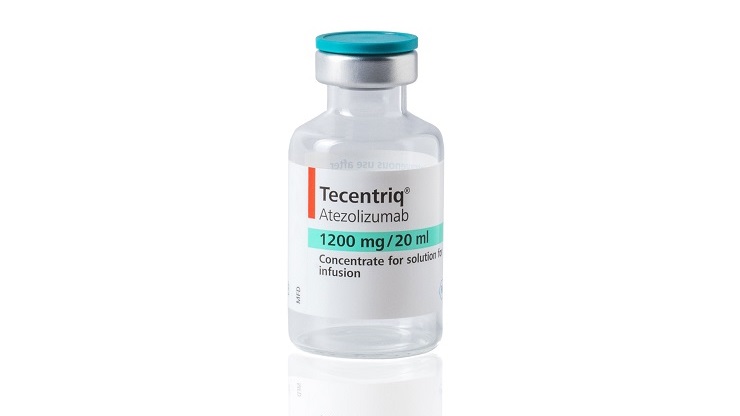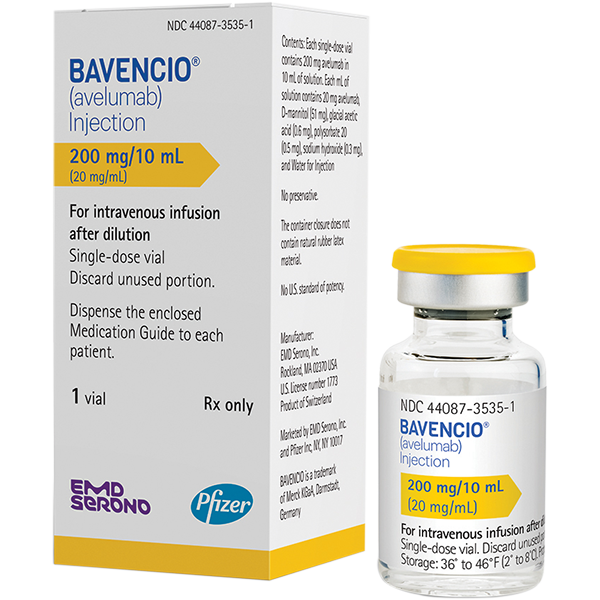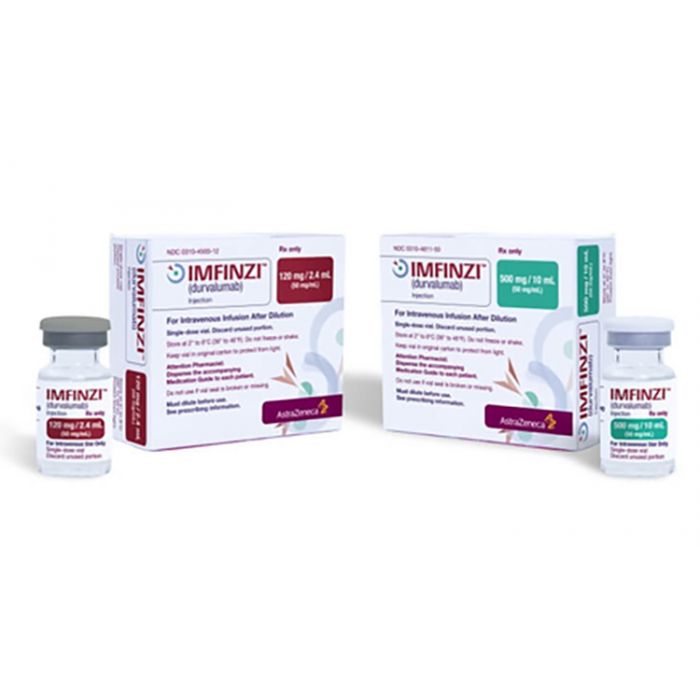Bladder cancer occurs when cells that comprise the urinary bladder begin to grow out of control. Over time, as more cancer cells develop, they can form a tumor and spread to other parts of the body. The most common type of bladder cancer, according to the American Cancer Society, is urothelial carcinoma, or transitional cell carcinoma (TCC). It begins in the urothelial cells that line the interior of the bladder.
It has become one of the diseases with high morbidity and high mortality worldwide. Before 2016, bladder cancer was mainly treated by surgery, with chemotherapy or radiation therapy as supportive treatments. At that time, the treatment options for patients with advanced and metastatic bladder cancer were very limited. However, with the application of immune checkpoint inhibitors, especially the approval of PD-1/PD-L1 inhibitors, both the clinical treatment effect of bladder cancer and the quality of life of patients have greatly improved. In recent years, six immunotherapy drugs have been approved for the treatment of bladder cancer.
Incidence of bladder cancer
The global incidence of bladder cancer ranks eleventh among all malignant tumors. The incidence rate of males is 9/100,000, which is the seventh among malignant tumors in men; the incidence of women is 2.2/100,000, which ranks tenth among women. The mortality rate from bladder cancer ranks thirteenth among all tumors. The mortality rate for males and females is 3.2 per 100,000 and 0.9 per 100,000 respectively, and for males, this mortality rate ranks ninth among malignant tumors.
There are regional, ethnic and gender differences in the incidence of bladder cancer, which can be seen in all age groups. The high incidence age is 50-70 years old. With the increase of age, the incidence rate also gradually increases. According to statistics from the US SEER database from 2010 to 2014, the median age at the time of diagnosis of bladder cancer was 73 years, and the median age at death was 79 years.
According to the “Guidelines for the Diagnosis and Treatment of Chinese Urology and Andrology Diseases (2019 Edition)”, the incidence of bladder cancer in China in 2015 was 5.8/100,000, ranking thirtheenth among systemic malignancies. The incidence in men was 8.83/100,000, ranking seventh. The female incidence rate was 2.61/100,000, ranking seventeenth. In 2015, China’s bladder cancer mortality rate was 2.37/100,000, ranking 13th among systemic malignancies, of which male mortality was 3.56/100,000 and female mortality was 1.11/100,000.
Classification, diagnosis, and treatment of bladder cancer
Other than the previously mentioned TCC, there is also squamous cell carcinoma, adenocarcinoma, small cell carcinoma, and sarcoma. The incidence rate of these types of cancer are very low compared to TCC. The four of them together represent less than 10% of bladder cancer cases. Sarcoma in particular is extremely rare.
Furthermore, squamous cell carcinoma and adenocarcinoma are nearly always invasive. “Invasive” and “non-invasive” refers to how far the cancers have spread into the wall of the bladder. Non-invasive cancers are only in the inner layer of cells. Invasive cancers have grown into deeper layers of the bladder wall. They are more likely to spread and more difficult to treat.
Diagnosis of bladder cancer
Some symptoms of bladder cancer include blood in the urine and changes in bladder habits or signs of irritation. Advanced bladder cancer has additional symptoms such as an inability to urinate, lower back pain on one side, loss of appetite or weight loss, and others.
The diagnostic methods of bladder cancer include clinical manifestations, ultrasonography, computer tomography (CT), multi-parameter magnetic resonance imaging (mpMRI), intravenous urography (IVU) and other imaging examinations, endoscopy, urine cytology and checking for tumor markers. Urine cytology is recommended for the auxiliary diagnosis of suspicious urothelial tumors or postoperative monitoring of bladder cancer, but negative urine cytology cannot be used as an exclusion diagnosis. The results of urine bladder cancer markers must be combined to improve the diagnosis of bladder cancer rate.
Treatment for non-invasive bladder cancer
Treatment options include surgery, intravesical therapy, chemotherapy, radiation therapy, immunotherapy, and targeted therapy.
According to different recurrence risks and prognosis, non-invasive bladder cancer can be divided into four groups: low-risk, intermediate-risk, high-risk, and very high-risk. For clinically diagnosed cancer, surgical methods, postoperative perfusion and follow-up strategies are usually selected based on the risk of tumor recurrence and progression. If there are no contraindications, patients with non-invasive bladder cancer often undergo additional therapy immediately after surgery.
Treatment for invasive bladder cancer
For invasive bladder cancer, neoadjuvant chemotherapy combined with radical cystectomy is the current gold standard for treatment, and radical cystectomy with pelvic lymph node dissection after neoadjuvant chemotherapy is the standard for treatment. For locally advanced invasive bladder cancer that is difficult to be cured by surgery, systemic treatment is the main treatment. Systemic treatment combined with optimal adjuvant treatment can help improve the patient’s survival rate and quality of life.
Immunotherapy drugs
Nowadays, immunotherapy is a common method to treat bladder cancer. The PD-1/L1 inhibitor is used in these treatments. With the advent of immunotherapy, new changes have taken place in the treatment of bladder cancer. The use of immune checkpoint inhibitor (ICI) therapy, especially the use of PD-1/PD-L1 monoclonal antibody, has shown anti-tumor activity in patients with locally advanced and metastatic bladder cancer, but also has good safety and a durable response. ICI has helped some patients with advanced bladder cancer achieve long-term survival and even reached the goal of clinical cure.
At present, the US FDA has approved 3 PD-1 inhibitors and 2 PD-L1 inhibitors for metastatic bladder cancer. They are Tecentriq (atezolizumab, PD-1 inhibitor), Opdivo (nivolumab, PD-1 inhibitor) , Bavencio (avelumab, PD-L1 inhibitor), Keytruda (pembrolizumab, PD-1 inhibitor), and Imfinzi (durvalumab, PD-L1 inhibitor). In addition, China’s NMPA approved Tislelizumab (Tislelizumab, Bezan, PD-1 inhibitor) for the treatment of locally advanced or metastatic urothelial cancer.
- Tecentriq (atezolizumab, PD-1 inhibitor)
Tecentriq was the first bladder cancer immunotherapy drug PD-1 inhibitor approved by the US FDA. In May 2016, the FDA approved the launch of Tecentriq (atezolizumab) from Roche’s Genentech company for the treatment of platinum-containing locally advanced or metastatic urothelial cancer that has progressed during or after chemotherapy, and where the disease has deteriorated within 12 months of receiving platinum-containing chemotherapy before or after surgery (neoadjuvant) or after surgery (adjuvant). It is for the treatment of advanced or metastatic urothelial cancer.
In addition, in October 2016, the FDA approved the expansion of Tecentriq indications for the treatment of non-small cell lung cancer that has failed targeted therapy and chemotherapy. In April 2017, the FDA again approved the expansion of Tecentriq’s indications for the treatment of locally advanced or metastatic urothelial cancer that cannot be treated with conventional cisplatin chemotherapy.

- Opdivo (nivolumab, PD-1 inhibitor)
In February 2017, the FDA approved Bristol-Myers Squibb’s Opdivo for the treatment of locally advanced or metastatic urothelial cancer (mUC). Patients need to have disease progression during or after platinum-containing chemotherapy; or when receiving platinum-containing chemotherapy, disease progression occurs within 12 months of chemotherapy as a neoadjuvant or adjuvant treatment.
In addition, Opdivo’s currently approved indications also include melanoma, non-small cell lung cancer, head and neck cancer, renal cell carcinoma, classic Hodgkin’s lymphoma, colorectal cancer, gastric cancer, and hepatocellular carcinoma.
The results of the bladder cancer clinical trial BLASST-1 in February 2020 showed that Opdivo combined with gemcitabine and cisplatin neoadjuvant treatment of patients with myometrial invasive bladder cancer (MIBC) achieved significant results: pathological non-muscle invasion rate (PaR) was 66%, and the complete response rate (CR) was 49%.

- Bavencio (avelumab, PD-L1 inhibitor)
In May 2017, the FDA approved Merck/Pfizer’s new PD-L1 monoclonal antibody Bavencio (avelumab) for the treatment of advanced or metastatic urothelial cancer (UC). The treatment is for patients who had previously received platinum chemotherapy and the disease progressed within 12 months after chemotherapy-like neoadjuvant therapy or adjuvant therapy.
In July 2020, the US FDA approved the PD-L1 inhibitor Bavencio (avelumab) for the maintenance treatment of patients with locally advanced or metastatic urothelial carcinoma (UC) who have not progressed in first-line platinum-containing chemotherapy.

- Keytruda (pembrolizumab, PD-1 inhibitor)
In May 2017, the FDA approved Merck’s PD-1 immunotherapy Keytruda (pembrolizumab) as a monotherapy for the treatment of locally advanced or metastatic urothelial cancer (UC, a type of bladder cancer). Specifically: (1) First-line treatment: used for locally advanced or metastatic adult patients with cisplatin-containing chemotherapy regimens; (2) Second-line treatment: used for locally advanced or advanced patients who have previously received platinum-containing chemotherapy and adult patients with metastatic UC.
In January 2020, Keytruda was approved for a new indication for bladder cancer. As a single drug, it is used to treat non-compliance, BCG vaccine (BCG) non-response, high risk, with carcinoma in situ (CIS), with patients with non-muscular invasive bladder cancer without papillary tumors. The drug was also the first PD-1 immune checkpoint inhibitor approved for the treatment of certain high-risk non-invasive bladder cancer patients.

- Imfinzi (durvalumab, PD-L1 inhibitor)
In May 2017, the FDA approved AstraZeneca’s Imfinzi (durvalumab) to be marketed for the treatment of locally advanced or metastatic bladder cancer that deteriorated during or after platinum-containing chemotherapy, or within 12 months of platinum-containing neoadjuvant or adjuvant chemotherapy for urothelial carcinoma.
In February 2020, data from a phase II study (NCT03534492) showed that the PD-L1 inhibitor Imfinzi and the targeted anticancer drug Lynparza (olaparib, olaparib) were used in combination in the treatment of muscle invasive bladder cancer (MIBC). They showed a strong efficacy in neoadjuvant therapy: Pathological complete remission rate (pCR) reached 50%.

- Tislelizumab (Tislelizumab, Bezeran)
On April 9, 2020, BeiGene’s self-developed PD-1 monoclonal antibody Tislelizumab (Tislelizumab, Bezean) was officially approved by the National Medical Products Administration (NMPA) in China for use in previously treated patients with locally advanced or metastatic urothelial cancer. So far, tislelizumab has become the first PD-1/PD-L1 monoclonal antibody approved for urothelial cancer indications in China. The marketing application of tislelizumab for the treatment of UC is based on the results of a pivotal phase II clinical study (CTR20170071), which enrolled a total of 113 cases of previously treated PD-L1 positive locally advanced or metastatic China And Korean UC patients. The median follow-up time was 8 months. The results of the study showed that the overall response rate (ORR) of tislelizumab single-agent second-line treatment of UC was 23.1%, of which the complete response rate (CR) was 7.7% and the partial response rate (PR) was 15.4%.

Market opportunity analysis
At present, a total of 10 PD-(L)1 tumor immunotherapy drugs are on the market worldwide, each with different indications. Expanding the indications of PD-(L)1 tumor immunotherapies has become a major trend in the treatment of bladder cancer. As the efficacy of immune checkpoint inhibitors is gradually confirmed by relevant clinical data, the exploration of immune checkpoint inhibitors for bladder cancer indications has moved from second-line therapy to first-line therapy. Other treatment programs are carrying out clinical trials.
In addition to immune checkpoint inhibitor drugs as innovative drugs for the treatment of bladder cancer, innovative technologies such as antibody conjugate drugs, bispecific antibody drugs, and Car-T cell therapies are worth looking into.
In 2018, the FDA issued a breakthrough therapy designation for the antibody conjugate drug Padcev (enfortumab vedotin) developed by Seattle Genetics (Now Seagen) and Astellas for the treatment of patients with locally advanced or metastatic urothelial cancer.
Vicineum is an antibody conjugate drug for bladder cancer. Preclinical studies have confirmed that EpCAM is over-expressed in NMIBC cells, but almost not expressed in normal bladder cells. In the United States and the European Union, Vicineum was granted Orphan Drug Designation in 2005 and Fast Track Designation by the FDA in August 2018 for the treatment of non-invasive bladder cancer. In July 2020, Qilu Pharmaceuticals and Sesen Bio reached a licensing agreement to obtain the exclusive right to develop and sell SesenBio’s new drug Vicineum (oportuzumabmonatox) in Greater China.
Linton Pharmaceutical’s official website shows that Catumaxomab developed by the company is a bispecific antibody targeting CD3 and EpCAM. It is currently conducting clinical trials in China against non-muscular invasive bladder cancer and locally recurring colorectal cancer. These indications are expected to be approved in China in 2023 and 2024, respectively.
Sources
【1】Specifications for diagnosis and treatment of bladder cancer (2018 edition)
【2】Guidelines for Diagnosis and Treatment of Urology and Andrology Diseases in China (2019 Edition)
【3】https://www.medsci.cn/article/show_article.do?id=f5ae19234206
【4】https://www.cn-healthcare.com/articlewm/20180305/content-1022990.html
【5】https://dy.163.com/article/FQGG16SH0514RSQF.html
【6】https://med.sina.com/article_detail_103_2_43345.html
【7】Qilu Pharmaceutical official website
【8】Linton Pharmaceutical Official Website

0 Comments